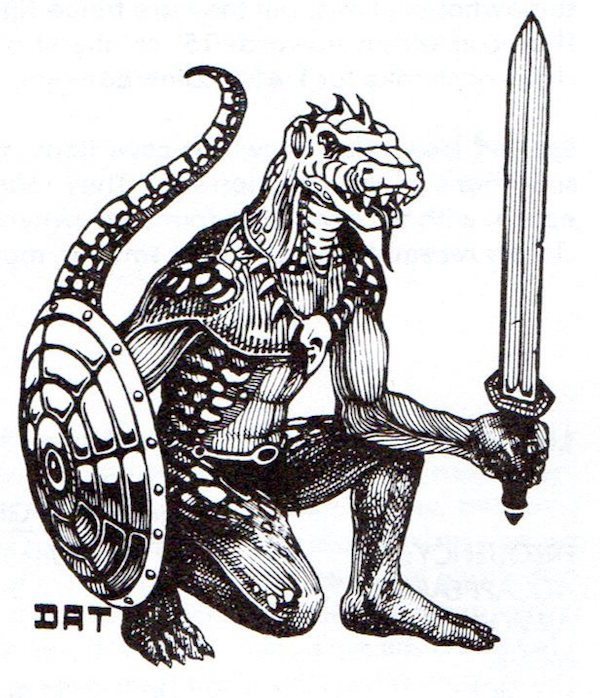 |
A "Holmes Basic Combat" |
The Blue Book contains a notorious "broken rule": all weapons do fixed 1d6 damage (pg 18), but "light weapons such as the dagger allow two blows per round" and two-handed weapons can be used only once every other round (pg 20). This rule as written wildly favors daggers (2d6 per round) over swords (1d6 per round) over two-handed swords (1d6 every other round). Not a big deal if only M-Us with poor AC are using daggers, but if all the fighters in plate & shield are also using daggers it gets ridiculous. Plus no one would ever use a two-handed weapon since you lose doubly on damage and AC (no shield).
There's been much discussion of where this came from, with theories ranging from the earlier Chainmail Man-to-Man rules or the upcoming AD&D rules. It often comes up when a new pair of eyes reads the Blue Book and thinks they are missing something. Most theories envision poor editing on the part of Holmes and/or TSR, which I don't deny. I also agree that Chainmail is the ultimate source of this rule, but I think I've discovered a more direct source: the Warlock combat system "Attack Matrix". I've previously described the Warlock system and how Holmes used it when he started, and made an earlier post about how it influenced the order of combat in the Blue Book.
I think the telling language is Holmes' use of the term "blows", which barely appears in OD&D (or the relevant section of AD&D), but is used in Chainmail and Warlock. In Chainmail, a weapon that is 4 classes above another (e.g., 1 vs 5) gets two blows per round, and one 8 classes above (e.g., 1 vs 9) gets three blows per round. Thus daggers (class 1) get one blow versus a sword (class 4), and three versus most two-handed weapons (e.g., two-handed sword, class 10). The weapon classes and chances for each to hit various types of armor are in the Man-To-Man-Melee Table in Appendix B (pg 41).
Warlock seems to have expanded the Chainmail MtM Table for its own Attack Matrix. Like the MtM Table, each weapon (dagger, hand axe, sword, flail, etc) has its own chances for hitting different ACs, although here in d% rather than 2d6 chances. Following these, each weapon is given a number of blows per combat "phase", the Warlock term for rounds. Finally, each is given a number of d6 Damage Dice. A dagger gets 4 attacks of 1d6 per phase; a long sword gets 3 attacks of 2d6; and a two-handed sword gets 1 attack of 3d6. These are balanced by different effectiveness against different ACs, particularly the lower ACs where two-handed weapons have more chance of hitting (similar to Chainmail MtM). Monsters have a similar table with multiple blows for smaller, faster attacks.
Comparing the three systems, Warlock is closer to what Holmes used - a dagger gets more attacks than sword (2 vs 1 in Holmes; 4 vs 3 in Warlock) or two-handed sword (4 vs 1 in each). Based on this, and the knowledge that Holmes used the Warlock supplement in his early years of playing, my conclusion is that Warlock is the immediate source for the rule in the Basic rulebook. This is not to say that Holmes was not also familiar with Chainmail; the Basic rulebook parry rule is closer to that in Chainmail than the rule in Warlock.
It remains that Holmes' version is unbalanced without the multiple damage dice and/or Weapon vs AC used in Warlock. It's unclear if this was overlooked or lost during editing. Next time I'll talk about simple ways to retain the Holmes rule but use it more effectively.
See also:
WARLOCK or how to play D&D without playing D&D? (Overview of Warlock)
Part 16 of the Holmes manuscript series



























